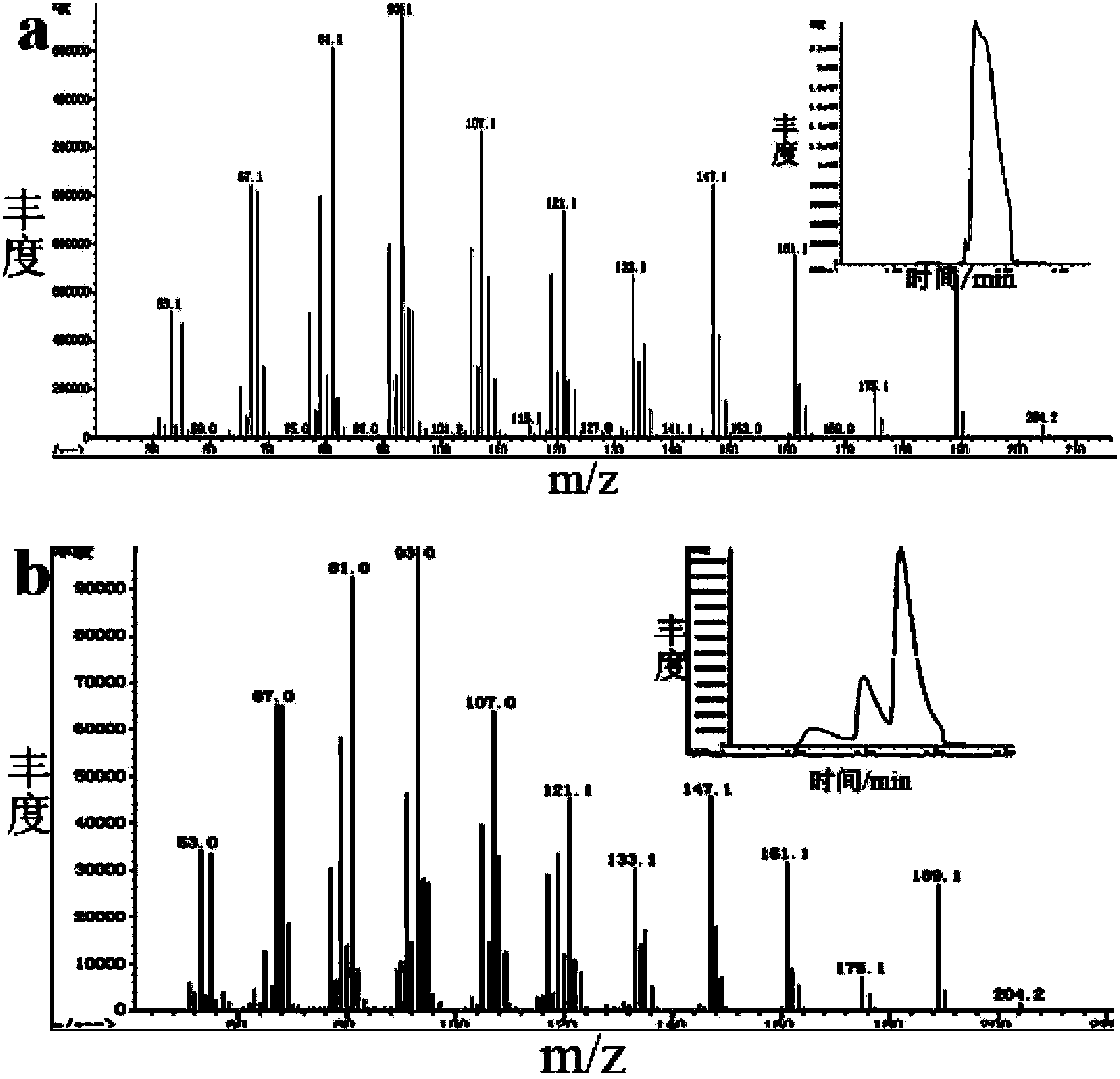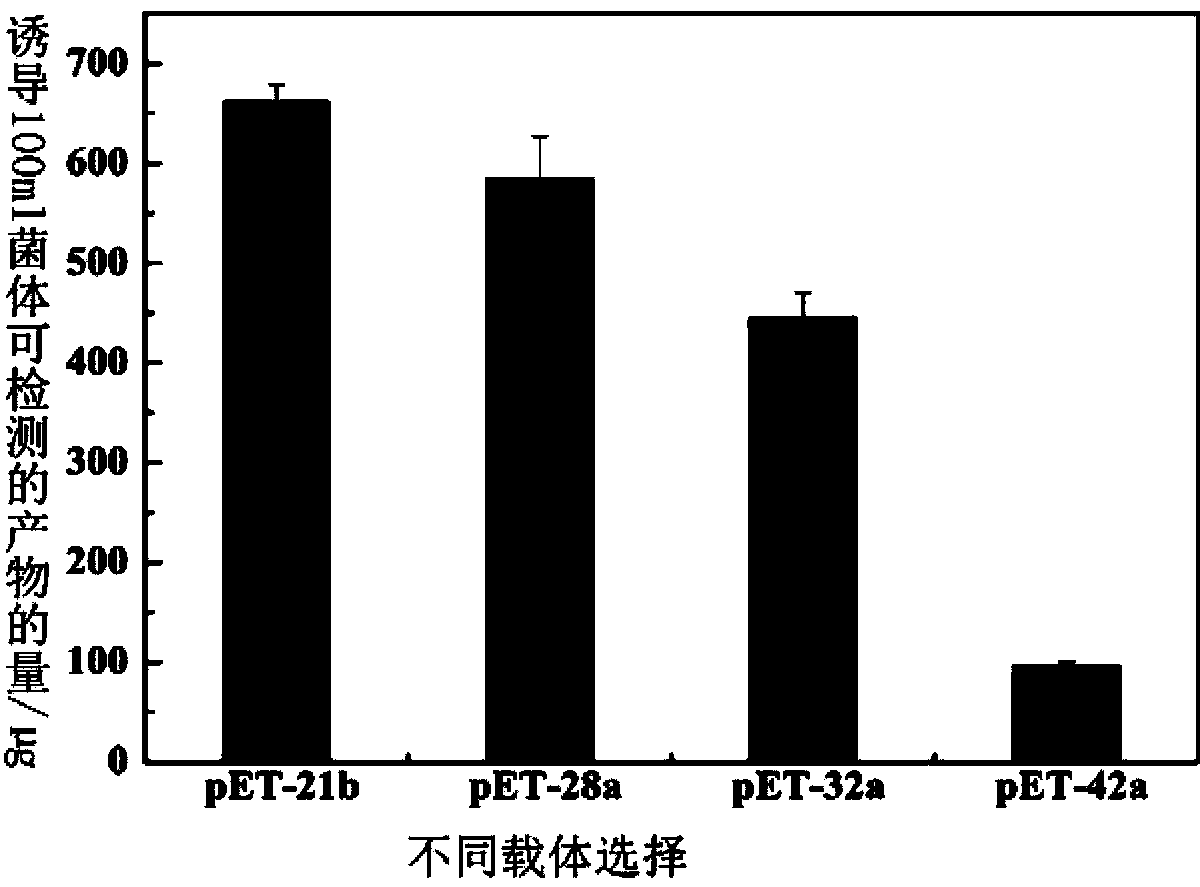Beta-elemene synthetase, encoding gene thereof, carrier, engineering bacterium and application of beta-elemene synthetase
A technology of genetically engineered bacteria and coding genes, applied in the field of β-elemene synthase, can solve the problems of low yield, high pollution of highly toxic substances, and long time consumption
- Summary
- Abstract
- Description
- Claims
- Application Information
AI Technical Summary
Problems solved by technology
Method used
Image
Examples
Embodiment 1
[0076] Construction of a soil genome library. Strains from the metagenomic library were randomly selected for sequencing. Determine the nucleotide sequence of the open reading frame (ORF) of the β-elemene synthase gene through literature review and sequence analysis, design primers to amplify the complete coding reading frame, and introduce restrictions on the upstream and downstream primers Endonuclease sites (depending on the carrier selected). The β-elemene synthase gene of the nucleotide sequence shown in SEQ ID NO.2 was obtained by PCR technique. PCR amplification program 95°C, pre-denaturation for 5min, 32 cycles (denaturation at 98°C for 10sec; annealing at 58°C for 30sec; extension at 68°C for 2min), hold at 16°C. The gene was connected with pET28a expression vector, and then transformed into E. Coil BL21 to obtain a recombinant strain.
Embodiment 2
[0078] Transfer the obtained recombinant strain to LB liquid medium containing 10 μg / ml kanamycin, induce overnight at 30°C with 0.4mM IPTG, and use the strain without inducer as a control; take 1.5ml culture solution at 12000rpm Centrifuge for 1 min, add 300 μl of 0.5 mM pH7.5 Tris-HCl buffer solution, and ultrasonically disrupt the cells. Take 100 μl of broken samples for whole cells, supernatant, and pellets and add 20 μl of 5× protein electrophoresis loading buffer. For control samples, take 100 μl of broken whole cells and add 20 μl of 5× Protein electrophoresis Loading buffer, boiled in a boiling water bath for 5 minutes; after the sample is cooled to room temperature, use 15% SDS-PAGE gel for protein electrophoresis to detect protein expression, the results are shown in figure 1 .
[0079] Depend on figure 1 It can be seen that β-elemene synthase is an intracellular enzyme, which mainly exists in the inclusion bodies of bacteria.
[0080] Preparation of LB liquid medi...
Embodiment 3
[0082] Transfer the recombinant strain to 100ml LB liquid medium containing 10μg / ml kanamycin, wait for OD 600 When it reaches 0.8, add 400 μl of 10mM IPTG and seal the bottle mouth completely with a parafilm, place it at 30°C for 16-20 hours, take the culture solution and use solid phase microextraction (SPME) to extract it for 30 minutes and then perform gas chromatography-mass spectrometry detection. The results are shown in figure 2 . While the blank E.Coil BL21 strain was used as a negative control, no β-elemene production was detected.
[0083] Depend on figure 2 It can be seen that the initial expression peak area of β-elemene produced by the recombinant strain is 4,067,531. According to the standard product β-elemene 1 μl, the peak area detected after adsorption for 30 minutes under the same conditions of solid-phase microextraction is 278,992,338. After conversion, β-elemene - Elemene yield was 128 μg / L.
PUM
 Login to View More
Login to View More Abstract
Description
Claims
Application Information
 Login to View More
Login to View More - R&D
- Intellectual Property
- Life Sciences
- Materials
- Tech Scout
- Unparalleled Data Quality
- Higher Quality Content
- 60% Fewer Hallucinations
Browse by: Latest US Patents, China's latest patents, Technical Efficacy Thesaurus, Application Domain, Technology Topic, Popular Technical Reports.
© 2025 PatSnap. All rights reserved.Legal|Privacy policy|Modern Slavery Act Transparency Statement|Sitemap|About US| Contact US: help@patsnap.com



